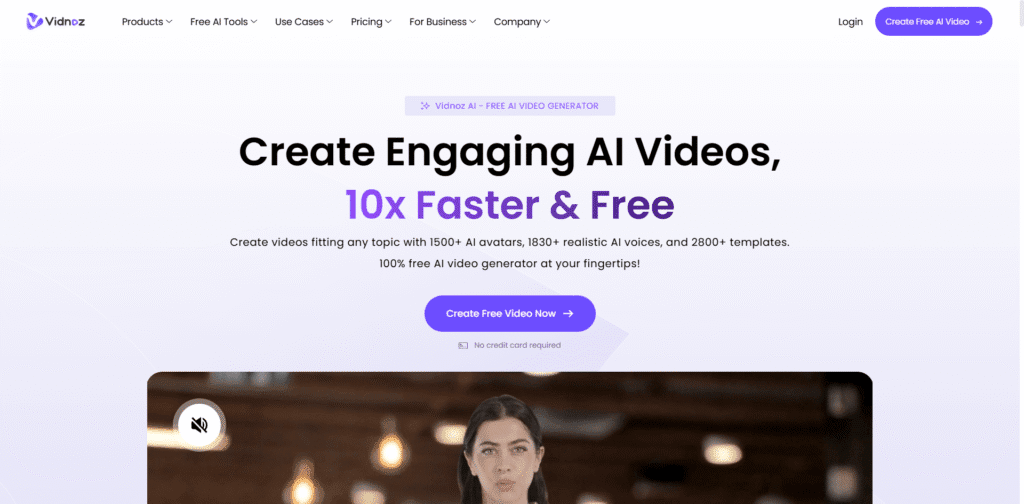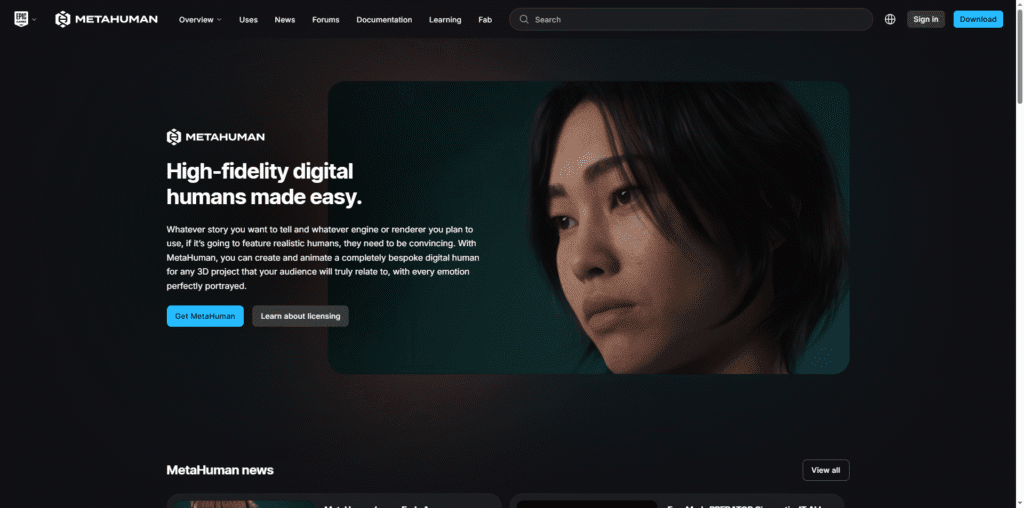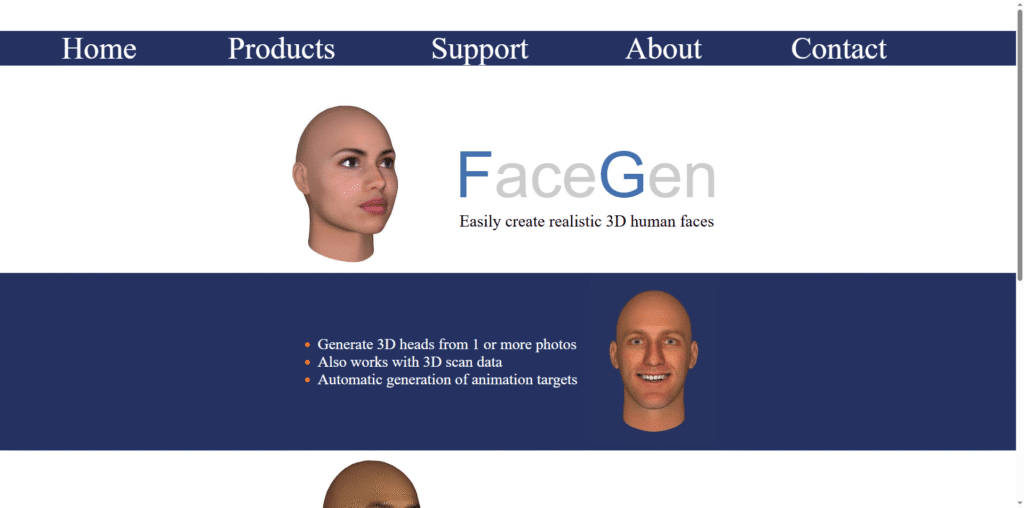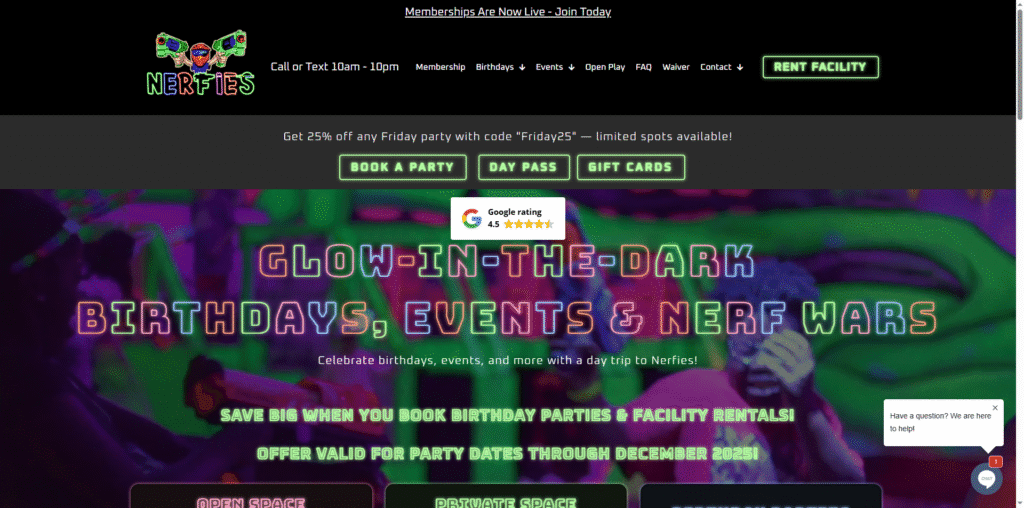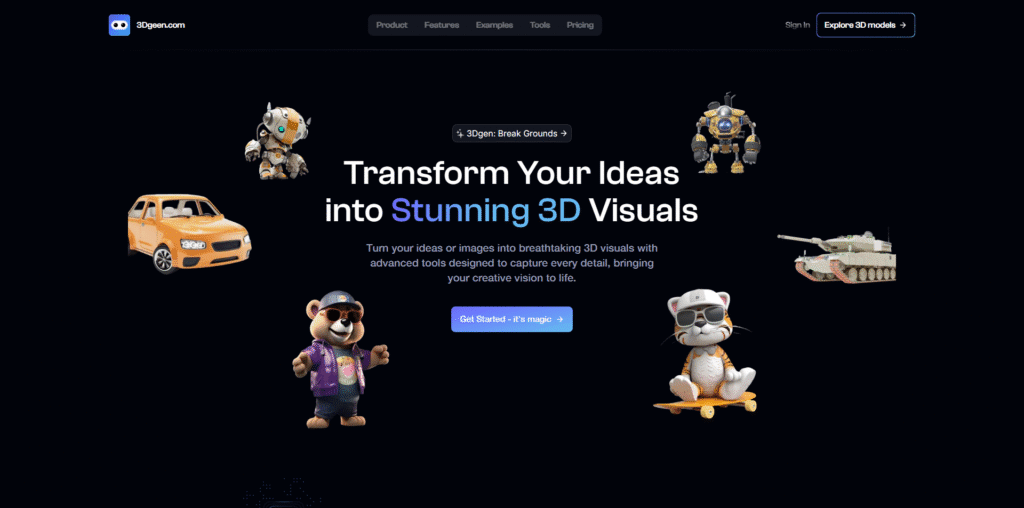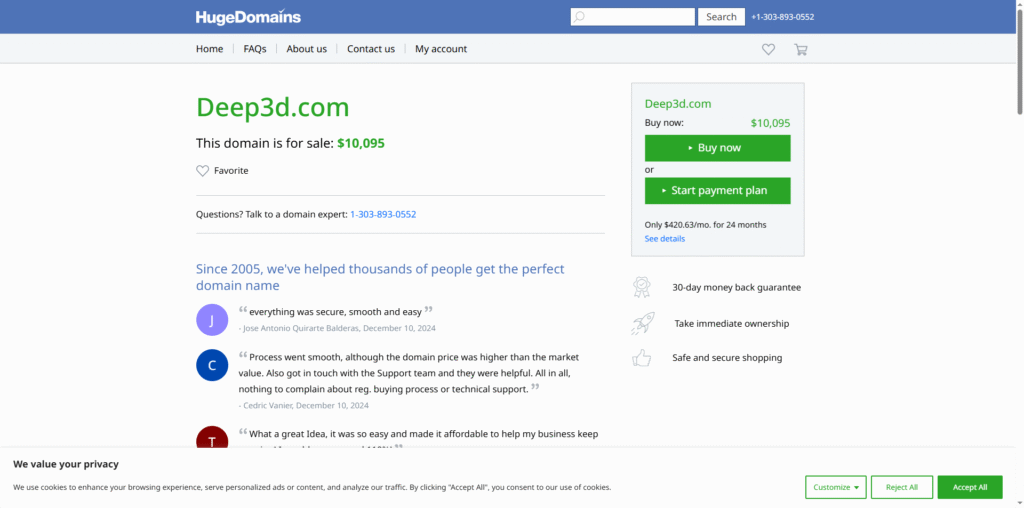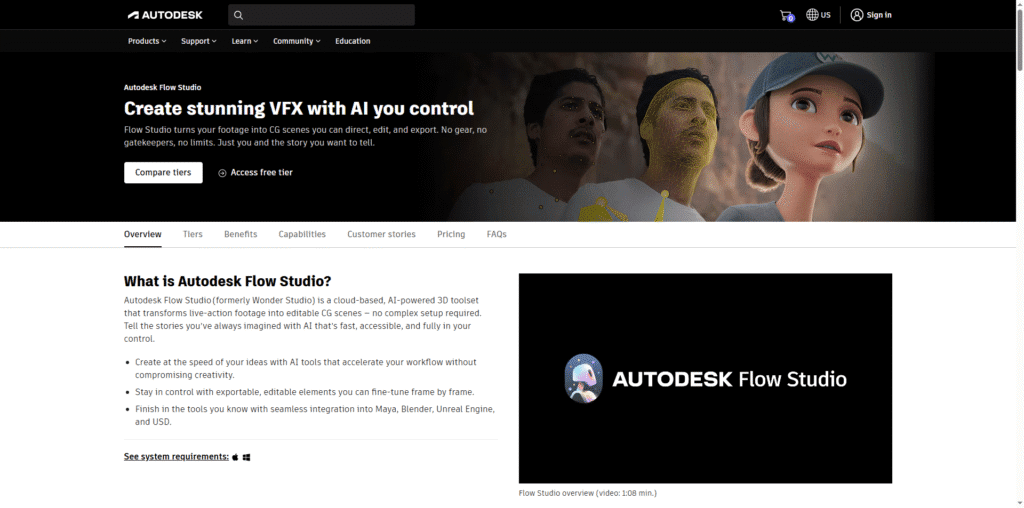Tripo3D.ai is an AI-driven 3D model generation platform that turns text, images, multi-view photos, or even doodles into high-quality 3D models in seconds. It aims both at creative users (artists, game designers, makers) and developers, offering tools for rapid prototyping, 3D printing, AR/VR content, metaverse assets, product visualization, and more. With exports in multiple 3D formats and support for detailed geometry & PBR materials, it bridges the gap between idea and usable 3D asset.
How Tripo Works & Key Capabilities
Users can start with one of several input types: a text prompt (“a wooden chair with curved legs”), a single image, multiple views of an object, or even a rough doodle. The platform then processes the input through its AI model to generate a 3D mesh. The process is fast — often around 10 seconds for many standard models. Once generated, these models can be exported in formats such as GLB, FBX, OBJ, USD, STL, and others. The assets are designed to be usable in game engines (Unity, Unreal, Godot), for 3D printing, AR/VR visualization, or for product design mockups.
Tripo also includes a “Studio” mode for editing or tweaking the generated models: adjusting textures, controlling material quality, refining geometry, etc. Developers can use a Tripo API for integrating model generation into other workflows or software. For more stylized needs, there are custom styles (artistic/digital themes) and templates for scenarios like games, product mockups, virtual worlds, etc.
Recent Additions & Updates
Recent updates have increased quality of the generated geometry, especially for details and realism (better material rendering, more detailed meshes). The platform has expanded its template library, allowing users to start from pre-styled scenarios or environments. There’s also progress toward features like auto-rigging (for humanoid or character models), environment generation (for setting scenes or virtual worlds), and enhanced export options.
Strengths & Use Cases
One major strength is speed: for many use cases, Tripo can take a creative idea or image and produce a usable 3D model almost instantly. This is especially helpful for prototyping, visual ideation, concept art, game asset mockups, product previews, and rapid iteration. Another strength is format flexibility and compatibility: the ability to export in many formats ensures integration with most 3D tools or game engines. Also, the various input modes (text, image, doodle) make it highly accessible; non-technical users or creators without much modeling experience can still generate compelling 3D assets.
Limitations & Challenges
As with any AI-generated content, there can be limitations in precision or edge cases: objects with very fine detail, extremely specific textures, or unusual shapes may not be perfectly captured. Some generated models may need cleaning up, decimation, or manual tweaking to be production-ready. Another challenge is that more advanced features (like auto-rigging or environment generation) are still rolling out or in preview, so not all users yet have access. Also, upload/input quality matters: better images or more detailed prompts yield better results.
Ideal Audience
This tool is aimed at creators, hobbyists, indie game developers, 3D printing enthusiasts, product designers, AR/VR content makers, educators, and anyone wanting to visualize concepts quickly in 3D without deep modeling expertise. It’s also useful for teams who need mockups or prototypes rapidly, as well as for content pipelines where speed and format interoperability are important.
Final Thoughts
Tripo3D.ai is an exciting entry into the generative 3D AI space. It makes high-quality 3D modeling more accessible, cuts down substantially on time and effort for asset creation, and supports a variety of formats and workflows. While some refinements and manual work are often needed for production-level finalization, for many creative, prototyping, education, and conceptual uses, it delivers a lot of value. As the tool matures (especially with more tools like auto-rigging, environment generation, improved materials / detail), it has strong potential to be a standard choice for 3D creators.


